Madagascar’s mountain forests are haunted by one of the world’s rarest and most beautiful primates, the snow-white silky sifaka.

When the dawn mist lifts from the sacred slopes of Mount Marojejy, movement catches your eye: a flash of startling white travelling at speed through the dense forest canopy. It flits in and out of view like a wraith and only when it comes to a halt, framed in a gap, can you bring binoculars to bear. There’s no mistaking those long, slender limbs and pure white coat: it’s a simpona, or – to scientists – a silky sifaka. The rising sun illuminates the animal with a radiance that feels ethereal. No wonder locals know it as the ‘angel of the forest’.
It’s not always so easy to spot, however, especially when you’re craning up from the steep forest floor. “I was always hoping for cloudy skies,” admits photographer Ugo Mellone, who captured the rare images on these pages. “The animals are so white that an untrained eye can easily overlook them against the sky holes in the canopy.”
It doesn’t help that the silky sifaka’s home comprises some of the most challenging terrain on Madagascar: the Marojejy Massif, in the island’s north-east, rears to a height of 2,132m and its steep slopes are cloaked in dense forest. For years, this elusive animal and its hidden world remained shrouded in mystery, even to the few scientists who ventured there. “It was like being transported to a different world,” says Patricia Wright, conservation biologist at Stonybrook University.
Mistaken identity
It was not until this century that the silky sifaka gained proper recognition. First described to western science in 1871 by French zoologist Alfred Grandidier, it was initially classified as a white race of the diademed sifaka, Propithecus diadema. Indeed, by 1931 all Madagascar’s sifakas were thought to be races of either Verreaux’s sifaka or the diademed sifaka.
هذه القصة مأخوذة من طبعة Spring 2019 من BBC Wildlife.
ابدأ النسخة التجريبية المجانية من Magzter GOLD لمدة 7 أيام للوصول إلى آلاف القصص المتميزة المنسقة وأكثر من 9,000 مجلة وصحيفة.
بالفعل مشترك ? تسجيل الدخول
هذه القصة مأخوذة من طبعة Spring 2019 من BBC Wildlife.
ابدأ النسخة التجريبية المجانية من Magzter GOLD لمدة 7 أيام للوصول إلى آلاف القصص المتميزة المنسقة وأكثر من 9,000 مجلة وصحيفة.
بالفعل مشترك? تسجيل الدخول
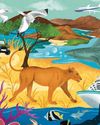
See It, Save It? - Wildlife tourism can be a powerful ally in protecting nature - but it can also harm it. We weigh up the pros and cons.
The sums of wildlife travel aren’t as simple as more tourists equals happier nature. How much did my visit really contribute to the conservation of Lady Liuwa and her habitat – and was that outweighed by carbon emissions from my flights? Did my presence disturb the animals’ natural behaviour more than it reduced the threat of poaching or benefited local communities?The question of whether wildlife travel is, on balance, good for wildlife is a complex one – and there’s no simple answer.

Can Your Really Offset Emissions? - Planning an overseas wildlife-watching trip entails facing some inconvenient truths
Imagine (or maybe you don't need to) that you hanker after the safari trip of a lifetime in sub-Saharan Africa. A 17-day tour beginning at the iconic Victoria Falls, passing through Zimbabwe, Zambia, Malawi and Tanzania, taking in some of the continent’s most wildlife-rich national parks, and ending on the lush island of Zanzibar.

Metamorphosis: a life-changing event
WITH EVOLUTIONARY BIOLOGIST JV CHAMARY
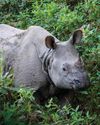
New series for BBC One: Asia
Settle in this autumn for a new natural-history extravaganza on BBC One and iPlayer: the longawaited Asia, presented by Sir David Attenborough.
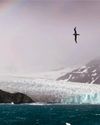
Loss of Antarctic sea ice could impact seabird food supply
Albatrosses and petrels may be forced to fly further to feed
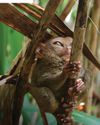
Tarsiers in trouble
Urgent action is needed to ensure survival of the Yoda-like primate

SNAP-CHAT
Chien Lee on shrew loos, rogue drones and being rained out of bed
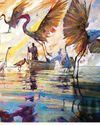
VISIONS OF NATURE
The winners of the Wildlife Artist of the Year competition 2024, from David Shepherd Wildlife Foundation

RETURN OF THE GIANTS
After two decades of preparations, the island of Floreana in the Galápagos is ready to welcome back an iconic tortoise

10 HOLIDAYS FOR CONSERVATION
Our round-up of the best ecotourism projects around the world. Here's how to help wildlife while having a blast!